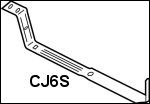dcspector
Senior Member
- Location
- Burke, Virginia
I don't think fractal geometry is something an inspector is going to understand.
Well Ken "thank you very little"....how do you spell that?......rectal geometry or sumpin like that? My dumb you said fractal......sorry.:grin:




